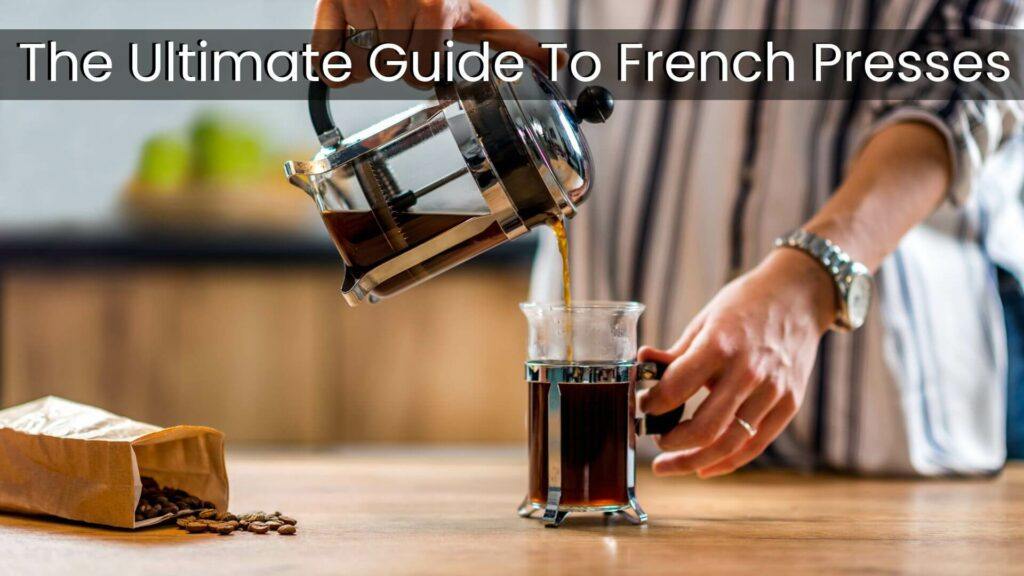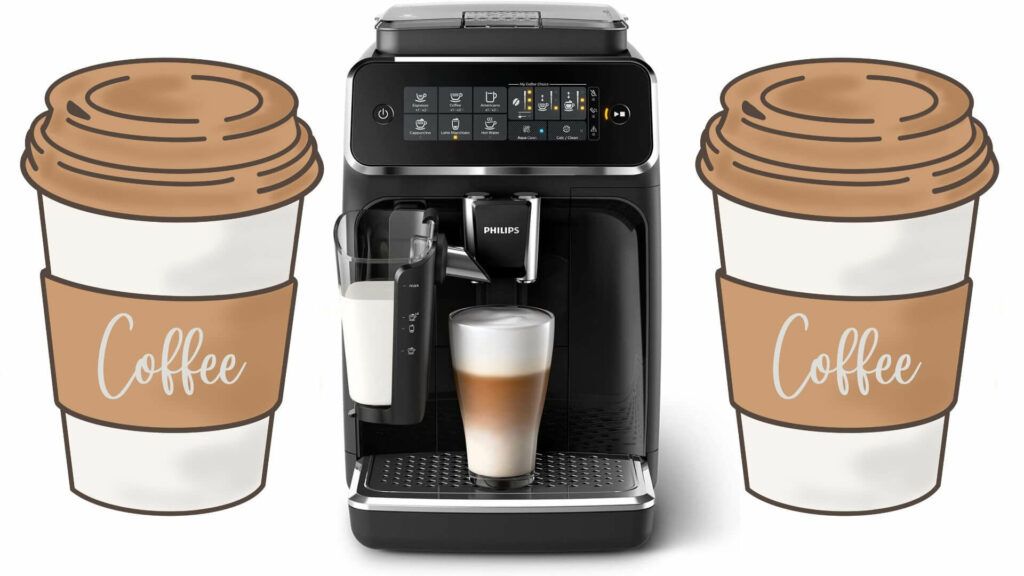How To Make Perfect Coffee at Home? Are you kidding me? Who needs a guide for that? All you need is a bag of coffee, some hot water, and a prayer to the caffeine gods, right? Wrong! Making perfect coffee is an art form, a delicate balance of science and wizardry that requires the right tools, ingredients, and know-how. But fear not, dear reader, for we here at Just Another Cuppa Coffee have scoured the depths of the internet and the darkest corners of coffee shops to bring you The Ultimate Guide: How To Make Perfect Coffee at Home. So sit back, relax, and let’s brew some magic!
Understanding The Different Types Of Coffee Beans
There are two main types of coffee beans: Arabica and Robusta. Here’s a closer look at each one:
Arabica Beans:
- Arabica beans are the most popular type of coffee bean, accounting for roughly 60% of global coffee production. They are grown in high-altitude regions, which makes them more expensive than Robusta beans. Arabica beans have a sweeter and more nuanced flavor profile than Robusta beans, with chocolate, nuts, and berries notes. They also contain less caffeine than Robusta beans, making them a popular choice for those sensitive to caffeine.
Why Is Arabica Coffee So Popular?
Have you ever wondered why is Arabica Coffee so popular, I know I did before taking that first wonderful sip!
I think I was about 35 years old when I had my first sip of Arabica coffee. My friends and I were in a local café, trying to study for our upcoming exams (I was a late Uni starter). But we just couldn’t focus. Our minds were foggy and our energy was zapped.
So, we decided to order some coffee. As soon as that first sip hit my lips, I was hooked. The rich flavor and tantalizing aroma were like nothing I had ever experienced before.
Robusta Beans:
- Robusta beans are less expensive and more widely available than Arabica beans, accounting for around 40% of global coffee production. They are grown at lower altitudes and are more resistant to pests and diseases than Arabica beans. Robusta beans have a strong and bitter flavor profile, with notes of earthiness and woodiness. They also contain more caffeine than Arabica beans, which makes them a popular choice for those who want a stronger coffee flavor.
31 Robusta Characteristics – Why Is Robusta Such A Disgusting Word
Do you shudder when you hear the word “robusta”? I know I did. But what is it about this coffee bean that makes it so unappealing? Is it the strong, bitter taste? The fact that it’s cheaper to produce than other types of coffee. Or is it simply the word itself that’s so off-putting?
In addition to these two main types of coffee beans, there are also hybrid varieties that combine Arabica and Robusta beans. These hybrid beans are often grown in regions where both types of beans can thrive, and they can have a unique flavor profile that combines the best qualities of both types of beans.
A Step-by-Step Guide To Choosing And Grinding Coffee Beans
Are you tired of drinking boring, bland coffee every day? Are you ready to step up your coffee game and become a coffee connoisseur? Well, you’ve come to the right place! In this step-by-step guide, we’ll teach you how to choose and grind coffee beans like a pro. And we’ll do it with a little bit of humor, because why not?
Step 1: Choose Your Beans
The first step in making a great cup of coffee is choosing the right beans. You want to look for fresh, high-quality, and ethically sourced beans. But how do you know if a bean is of good quality? Here are a few tips:
- Smell the beans: If the beans smell like old socks or burnt rubber, put them back. Good coffee beans should have a rich, aromatic scent.
- Look for oily beans: If the beans are shiny and oily, that’s a good sign. It means they’ve been roasted recently and will have a fuller flavor.
- Check the roast date: The fresher the beans, the better the coffee will taste. Look for beans that have been roasted within the last two weeks.
And if all else fails, just ask the barista for their recommendation. They know their stuff!
Step 2: Grind Your Beans
Now that you have your beans, it’s time to grind them. But be warned: grinding coffee can be a bit of a workout. If you’re not careful, you could end up with arms like Schwarzenegger.
First, you’ll need a grinder. You can use a blade grinder or a burr grinder, but the burr grinder is the better choice for a more consistent grind. Once you have your grinder, it’s time to start grinding.
But how do you know how fine or coarse to grind your beans? Here’s a quick cheat sheet:
- French press: Coarse grind
- Pour-over: Medium grind
- Espresso: Fine grind
And if you’re feeling really adventurous, you can try experimenting with different grind sizes to see what you like best. Just don’t blame us if your arms get tired!
“The Best Coffee Grinder For Every Budget In 2023 And Beyond”
If you want to take your coffee game to the next level, it’s time to invest in the best coffee grinder.
Ah, coffee. The magical elixir that turns morning grumps into bright-eyed and bushy-tailed humans ready to take on the day. But let’s face it, the quality of your coffee depends heavily on the tools you use. And if you’re a true coffee lover, you know that nothing beats freshly ground beans.
Step 3: Brew Your Coffee
Now that you have your freshly ground beans, it’s time to brew your coffee. There are a ton of different brewing methods out there, from the classic drip coffee maker to the trendy AeroPress. But no matter what method you choose, there are a few things to keep in mind:
- Use the right amount of coffee: As a general rule, use 1 to 2 tablespoons of coffee per 6 ounces of water.
- Use filtered water: The quality of your water will affect the taste of your coffee, so use filtered water if possible.
- Don’t over brew: Overbrewing your coffee can taste bitter. Keep an eye on your brewing time and ensure you’re not leaving your coffee on the heat for too long.
And there you have it! A step-by-step guide to choosing and grinding coffee beans like a pro. We hope you found this section helpful and have fun experimenting with different beans and brewing methods. Just remember to take it easy on your arms!
Mastering Coffee-to-Water Ratios For The Perfect Cup
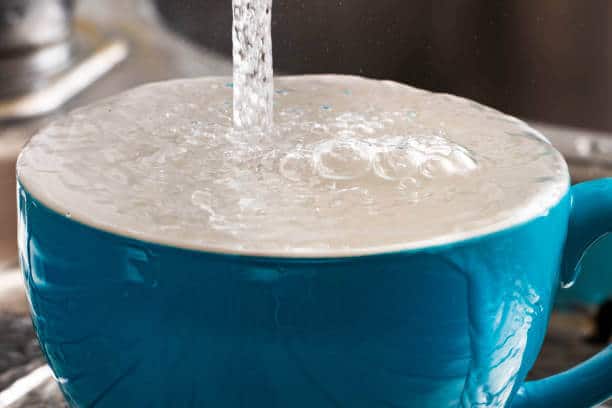
Greetings, coffee enthusiasts and caffeine addicts! Today, we’re going to talk about something that’s near and dear to all our hearts: How to make perfect coffee at home. And, more specifically, how to master the elusive coffee-to-water ratio for the perfect cup.
Now, I know what you’re thinking. “But Mark, making coffee is easy! You just put some beans in a machine, add water, and voila!” Ah, my dear friends, if only it were that simple. If you’ve ever brewed a cup of coffee that tasted like burnt dirt water, you know what I’m talking about. But fear not! With a little education and much trial and error, you, too, can achieve coffee nirvana.
So, what is the ideal coffee-to-water ratio? Well, the answer is… it depends! I know, I know, that’s not very helpful. But hear me out. The perfect ratio will vary depending on the type of coffee you’re using, the grind size, and your personal taste preferences. But, as a general rule of thumb, a good starting point is two tablespoons of coffee for every six ounces of water.
Now, let’s talk about why this ratio is so important. First and foremost, it affects the strength of your coffee. Too little coffee, and your brew will be weak and watery. Too much coffee, and you’ll end up with a bitter, overpowering cup. But it’s not just about strength. The ratio also affects the flavor and aroma of your coffee. Adjusting the ratio allows you to bring out different notes and nuances in your beans.
So, how do you find your perfect ratio? The best way is through experimentation. Start with two tablespoons of coffee for every six ounces of water and see how you like it. If it’s too weak, try adding more coffee. If it’s too strong, add more water. And if you want to get really fancy, try experimenting with different grind sizes and brewing methods. Who knows, you may just stumble upon the ultimate coffee concoction.
I promised you a little humor with your education, so let me leave you with this thought: coffee is a lot like life. It can be bitter or sweet, weak or strong, and sometimes it just doesn’t go how we want it to. But you can create something beautiful and satisfying with a little experimentation and a lot of love. So, go forth and master that coffee-to-water ratio. Your taste buds will thank you.
How To Brew Coffee Using Different Methods (French Press, Pour-Over, etc.)
Greetings, fellow coffee aficionados! Are you tired of drinking the same old cup of coffee every morning? Fear not, my friends, for today, we’re going to talk about how to brew coffee using different methods. That’s right; we’re about to spice up your coffee game and teach you how to make perfect coffee at home using a variety of brewing methods.
First up, the classic French press. This method involves steeping coarsely ground coffee beans in hot water and then pressing the mixture through a filter. The result is a rich, full-bodied brew that’s perfect for those who like their coffee strong and flavorful. To make the perfect French press coffee, start with a coarse grind, use water that’s just off the boil, and steep for four minutes before pressing.
The Ultimate Guide To French Presses (25 Of Your French Press Questions Answered)
Are you curious about French Presses? Maybe you don’t even know what they are!
What is a French Press? How do you use a French press? What are the benefits of using a French Press?
If you’re looking for answers to these questions, and more, you’ve come to the right place!
In this ultimate guide to French Presses, we’ll answer all of your questions and more. So, whether you’re just starting out or you’re already an experienced French Press user, read on for everything you need to know about this popular coffee brewing method.
Next, we have the pour-over method. This technique involves pouring hot water over a bed of coffee grounds in a filter, allowing the water to drip through slowly and extract the flavor. The result is a clean, bright cup of coffee that highlights the nuances of the beans. To make the perfect pour-over coffee, use a medium-fine grind, pour water slowly in a circular motion, and aim for a total brew time of three to four minutes.

If you’re looking for a more hands-off approach, consider using a drip coffee maker. This method involves pouring water into a machine that heats it and drips it over a basket of coffee grounds. The result is a consistent, easy-to-make cup of coffee that’s perfect for those busy mornings. To make the perfect drip coffee, use a medium grind, aim for a ratio of one tablespoon of coffee per six ounces of water, and experiment with different brewing times to find your preferred strength.
The Ultimate Guide To Drip Coffee (30 Of Your Drip Coffee Questions Answered)
In the world of coffee, there are many different brewing methods to choose from. But for many coffee drinkers, nothing beats the simplicity and ease of drip coffee.
If you’re new to drip coffee or just want to make sure you’re making the best cup possible, this guide is for you. We’ll answer 30 of your most common drip coffee questions so you can make a perfect cup every time.
And last but not least, we have the espresso machine. This method involves forcing hot water through finely-ground coffee beans under high pressure, resulting in a concentrated shot of coffee that’s perfect for lattes and cappuccinos. To make the perfect espresso, use a very fine grind, aim for a 1:2 ratio of coffee to water, and be prepared to spend some time practicing your tamping and timing skills.
Introducing The Philips 3200 Series Fully Automatic Espresso Machine Lattego
Say goodbye to your barista and hello to the Philips 3200 Series Fully Automatic Espresso Machine Lattego! Are you a coffee lover who enjoys a rich, frothy latte but can’t quite get the perfect balance of milk and espresso at home?
This sleek and shiny machine is like having a personal coffee shop in your kitchen without the need for a fancy apron or a snobby attitude.
So there you have it, folks! Four different methods for brewing the perfect cup of coffee at home. Whether you prefer a strong French press, a bright pour-over, a consistent drip, or a rich espresso, a brewing method is perfect for you. So grab your favorite mug, fire up your preferred brewing method, and let’s raise a toast to the perfect cup of coffee. Cheers!
Tips For Frothing Milk To Perfection
Greetings, fellow coffee lovers! Are you tired of frothing milk that looks like a science experiment gone wrong? Fear not, my friends, for today, we’re going to talk about how to froth milk to perfection. That’s right; we’re about to take your latte game to the next level and teach you how to make perfect coffee at home by mastering the art of milk frothing.
First things first, let’s talk about the tools you’ll need. You’ll want to invest in a good milk frother or steam wand, a thermometer, and a sturdy pitcher. Once you’ve got your equipment in order, it’s time to get started.
Tip number one: use cold milk. This may seem counterintuitive, but trust me on this one. Cold milk is easier to froth and will give you a better texture than warm milk. Plus, it gives you more control over the temperature of your milk, which leads me to…
Tip number two: pay attention to your temperature. The ideal temperature for frothed milk is between 150 and 155 degrees Fahrenheit. Use your thermometer to keep an eye on the temperature and remove the milk from the heat once it reaches this range. Overheating the milk will ruin the texture and flavor.
Tip number three: experiment with different types of milk. While whole milk is the most commonly used milk for frothing, plenty of other options exist. Try frothing almond, soy, or oat milk to see what works best for you.
Tip number four: practice makes perfect. Frothing milk takes practice, so don’t be discouraged if your first few attempts don’t turn out perfectly. Keep trying, adjust your technique as needed, and soon you’ll be frothing like a pro.
And last but not least, tip number five: have fun with it! Milk frothing is a creative process, so don’t be afraid to experiment with different textures and designs. Who knows, you may just discover your inner barista.
So there you have it, folks! Five tips for frothing milk to perfection and taking your coffee game to the next level. Remember, cold milk, pay attention to temperature, experiment with different types of milk, practice, and have fun. With these tips in mind, you’ll be frothing like a pro in no time. Cheers to the perfect latte!
Genuine Zulay Milk Boss Frother Review – The Number 1 Milk Frother
This little gadget comes with a durable design and powerful motor that makes it easy to create beautiful, fluffy foam every time. Whether you’re a coffee lover or tea enthusiast, this handheld milk frother is sure to make your mornings (and afternoons!) just a bit brighter.
Plus, it’s affordable and easy to use, so there’s no excuse not to add one to your kitchen arsenal! Ready to see what all the fuss is about?
Adding Flavor To Your Coffee: Syrups, Spices, and More

Are you tired of drinking the same old cup of coffee day in and day out? Fear not, my friends, for today, we’re going to talk about how to add some pizzazz to your coffee. That’s right; we’re about to take your coffee game to the next level and teach you how to make perfect coffee at home by adding a variety of syrups, spices, and other flavors.
First up, let’s talk syrups. Flavored syrups are a simple and easy way to add some sweetness and flavor to your coffee. You can find them in a variety of flavors, from classic vanilla and caramel to more unique flavors like lavender and pumpkin spice. Just add a pump or two of syrup to your coffee, and voila, a whole new flavor experience.
Next, let’s spice things up. Adding spices to your coffee is a great way to bring out different flavors and aromas. Cinnamon is a classic choice that pairs well with coffee, but don’t be afraid to experiment with other spices like nutmeg, cardamom, and ginger. Simply sprinkle a dash of your chosen spice into your coffee grounds before brewing, and enjoy the delicious results.
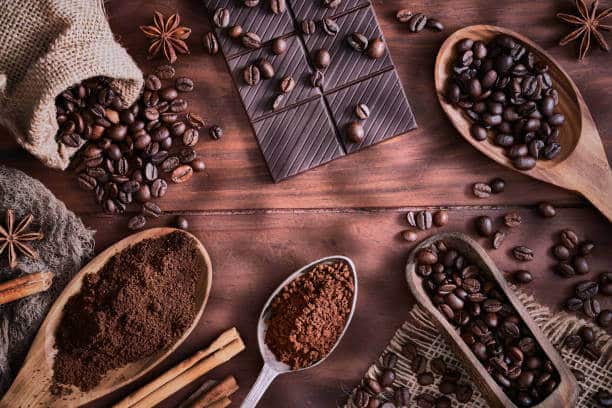
If you’re feeling a little more adventurous, try adding some non-traditional flavors to your coffee. For example, a drop or two of peppermint extract can give your coffee a refreshing twist, while a tablespoon of cocoa powder can give it a rich, chocolaty flavor. And if you’re feeling really daring, try adding a pinch of salt to your coffee – it may sound strange, but it can actually bring out the natural sweetness and flavors of the coffee.
And last but not least, don’t forget about the classics. A dash of cream or milk can add a creamy richness to your coffee, while a dollop of whipped cream can make it feel like a decadent treat. And if you’re in the mood for something a little stronger, a splash of Bailey’s or Kahlua can give your coffee a delicious boozy kick.
So there you have it, folks! Four ways to add some flavor to your coffee and take your coffee game to the next level. Whether you prefer sweet and syrupy, spicy and aromatic, or rich and creamy, there’s a flavor out there that’s perfect for you. So grab your coffee mug, get creative, and enjoy the delicious results. Cheers to the perfect cup of flavored coffee!
Coffee Brewing Mistakes To Avoid

Good morning, coffee lovers! We all know that feeling when you take a sip of your morning coffee only to find that something just isn’t quite right. Maybe it’s too bitter, too weak, or just downright undrinkable. Fear not, my friends, for today, we’re going to talk about the coffee brewing mistakes you must avoid to make perfect coffee at home.
Mistake number one: using the wrong coffee-to-water ratio. This common mistake can lead to either weak or overly strong coffee. The golden rule is to use two tablespoons of coffee for every six ounces of water. If you’re unsure how much water you’re using, invest in a coffee scoop or measuring cup to ensure you use the right amount.
Mistake number two: using old or stale coffee. Coffee is at its best within two weeks of roasting, so if you’re using more than a few weeks old beans, chances are they’ve lost their flavor and aroma. Invest in fresh beans, store them properly, and grind them just before brewing for the best results.
Mistake number three: using the wrong grind size. Different brewing methods require different grind sizes, and using the wrong size can result in either weak or bitter coffee. For example, a French press requires a coarse grind, while an espresso machine requires a fine grind. Do your research and ensure you use the right grind size for your brewing method.
Mistake number four: not cleaning your equipment. A clean coffee maker or French press is essential for making great coffee. Old coffee oils and residue can build up, leading to a stale or rancid taste. Clean your equipment regularly, and if you’re unsure how, consult the manufacturer’s instructions or research online.
Mistake number five: not heating your water to the right temperature. Water that’s too hot can scorch the coffee and make it taste bitter, while water that’s not hot enough can produce weak coffee. The ideal temperature range is between 195 and 205 degrees Fahrenheit. A thermometer ensures your water is at the right temperature before brewing.
So there you have it, folks! Five common coffee brewing mistakes to avoid if you want to make perfect coffee at home. Use the right coffee-to-water ratio, invest in fresh beans, use the right grind size, clean your equipment regularly, and heat your water to the right temperature. With these tips in mind, you’ll be brewing like a pro in no time. Cheers to the perfect cup of coffee!
Frequently Asked Questions About Home Coffee Brewing
How much coffee should I use per cup?

The general rule of thumb is to use two tablespoons of coffee for every six ounces of water. However, the amount of coffee can be adjusted to taste.u003cbru003e
What’s the best brewing method for a beginner?
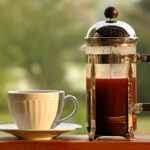
A French press or a drip coffee maker are both great options for beginners. They’re easy to use and produce consistent results.u003cbru003e
How can I make my coffee taste less bitter?

One way to make coffee less bitter is to use a coarser grind size. Also, be sure to use fresh, high-quality beans and avoid over-extracting by not leaving the coffee to brew for too long.u003cbru003e
What’s the best way to store coffee beans?
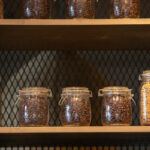
Coffee beans should be stored in an airtight container away from heat, moisture, and light. The freezer is not recommended, as it can cause the beans to absorb odors and lose flavor.u003cbru003e
Can I reuse coffee grounds?
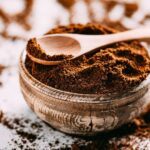
While it’s possible to reuse coffee grounds, the resulting coffee will be weaker and less flavorful than the first brew. It’s generally recommended to use fresh grounds for each batch of coffee.u003cbru003e
How often should I clean my coffee maker?
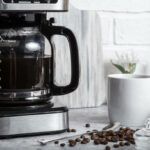
It’s recommended to clean your coffee maker at least once a month to prevent the buildup of old coffee oils and residue. For more heavily used machines, cleaning once a week may be necessary.u003cbru003e
How To Make Perfect Coffee At Home Conclusion
And there you have it, folks – a guide to making the perfect coffee at home. With these tips and tricks, you’ll be brewing like a pro in no time. But remember, even the most skilled baristas make mistakes from time to time. So, if you find yourself with a less-than-perfect cup of coffee, don’t despair. Just take a deep breath, make a fresh pot, and give it another go. After all, the beauty of making coffee at home is that you can experiment and perfect your brew to your heart’s content. And who knows, maybe one day you’ll be opening your very own coffee shop, serving up the perfect cup of coffee with a side of laughter and good vibes. Until then, happy brewing!





